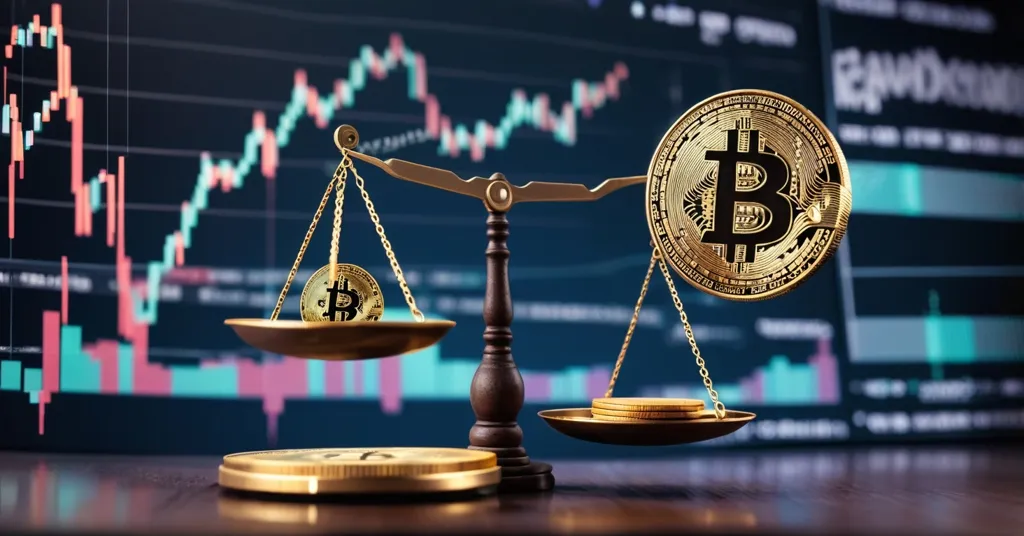Cardano’s Circulating Supply Hits 78%, Nears Bitcoin’s Milestone

Cardano’s Circulating Supply Nears Bitcoin’s Milestone: A Deep Dive into Market Dynamics
Cardano (ADA) has reached a significant milestone, with over 78% of its total supply now circulating in the market. This places Cardano second only to Bitcoin among the top ten cryptocurrencies, sparking discussions about its implications for market stability and future price dynamics.
- 78% of Cardano’s total supply now in circulation
- Second only to Bitcoin in circulating supply among top ten cryptocurrencies
- Fixed supply of 45 billion ADA mirrors Bitcoin’s scarcity model
- Genuine demand crucial as Cardano nears full market saturation
Cardano’s journey to this point has been marked by a commitment to a fixed supply of 45 billion ADA, a strategy that closely mirrors Bitcoin’s capped supply of 21 million coins. This scarcity model, designed to enhance long-term value, aligns with Bitcoin’s “digital gold” status. As Cardano approaches what’s known as market saturation—the point where most of the supply is already in circulation—genuine demand becomes increasingly vital in driving its price and mitigating potential inflationary pressures, a term that refers to the risk of price decreases due to too much supply.
Recent market data reflects a bullish trend for ADA, with the cryptocurrency experiencing a 10.97% price surge in the last 24 hours, reaching $0.7341. The trading volume also jumped by 70.7% to $1.1 billion, indicating a healthy trading activity with a volume-to-market cap ratio of 4.27%. In simpler terms, this ratio shows the amount of ADA traded compared to its total value, suggesting robust market interest.
Cardano’s approach to transparency and market stability sets it apart from many other digital assets with flexible or unlimited supply models. By ensuring no additional ADA tokens will be minted beyond its maximum cap, Cardano not only mirrors Bitcoin’s scarcity model but also positions itself as one of the most widely distributed cryptocurrencies, fostering greater trust among investors.
The broader cryptocurrency market underscores the importance of supply management. Bitcoin’s predictable supply schedule, including halving events where the reward for mining new blocks is cut in half, has been a cornerstone of its value proposition. Ethereum, on the other hand, has introduced dynamic supply adjustments like EIP-1559, which burns transaction fees and can lead to deflationary effects. Cardano’s fixed supply model is part of this trend, aimed at enhancing investor confidence and combating inflation.
Cardano’s treasury-based funding model, similar to Polkadot’s, adds another layer of complexity to its supply dynamics. Approximately 4.32 million ADA per epoch—a time period in Cardano’s blockchain—flows into the treasury, with subsequent withdrawals funding initiatives like Project Catalyst. This system impacts ADA’s supply and price stability, making it essential for investors to keep an eye on these movements.
Market sentiment and psychological factors play a significant role in driving cryptocurrency prices. Bitcoin’s scarcity narrative has been a powerful driver of its value, suggesting that similar narratives could influence Cardano’s market perception as it matures. Cardano, often seen as the marathon runner trying to catch up with Bitcoin’s supply milestone, might leverage this narrative to its advantage.
Looking ahead, the implications of Cardano’s high circulating supply and fixed supply model on its market position and stability are profound. As Cardano nears full market saturation, the balance between supply and genuine demand will be critical in shaping its future trajectory and adoption within the broader blockchain ecosystem.
While Cardano’s approach mirrors Bitcoin’s in many ways, it’s not without its critics. Some argue that a high circulating supply could lead to increased volatility if demand doesn’t keep pace. Others highlight the challenges of managing a treasury-based funding model without negatively impacting price stability. These counterpoints offer a balanced view, reminding us that while Cardano’s strategy has potential, it also faces significant challenges.
Cardano’s journey towards Bitcoin’s milestone in circulating supply is a testament to its commitment to a scarcity model that could shape its future in the cryptocurrency world. As the market continues to watch, the interplay between supply, demand, and Cardano’s strategic vision will undoubtedly provide a compelling narrative for investors and enthusiasts alike.
- What percentage of Cardano’s total supply is currently in circulation?
Over 78% of Cardano’s total supply is in circulation.
- How does Cardano’s supply model compare to Bitcoin’s?
Both Cardano and Bitcoin have fixed supply models, with Cardano capped at 45 billion ADA and Bitcoin at 21 million BTC.
- What impact does Cardano’s high circulating supply have on its market position?
It positions Cardano as one of the most widely distributed cryptocurrencies, suggesting greater transparency and market stability.
- Why is genuine demand important for Cardano’s price movement?
As Cardano approaches full market saturation, genuine demand will be crucial in driving its price and mitigating inflationary pressures.
- What recent market trends have been observed for Cardano?
Cardano’s price has increased by 10.97% in the last 24 hours to $0.7341, with a trading volume of $1.1 billion, up 70.7% in the same period.



